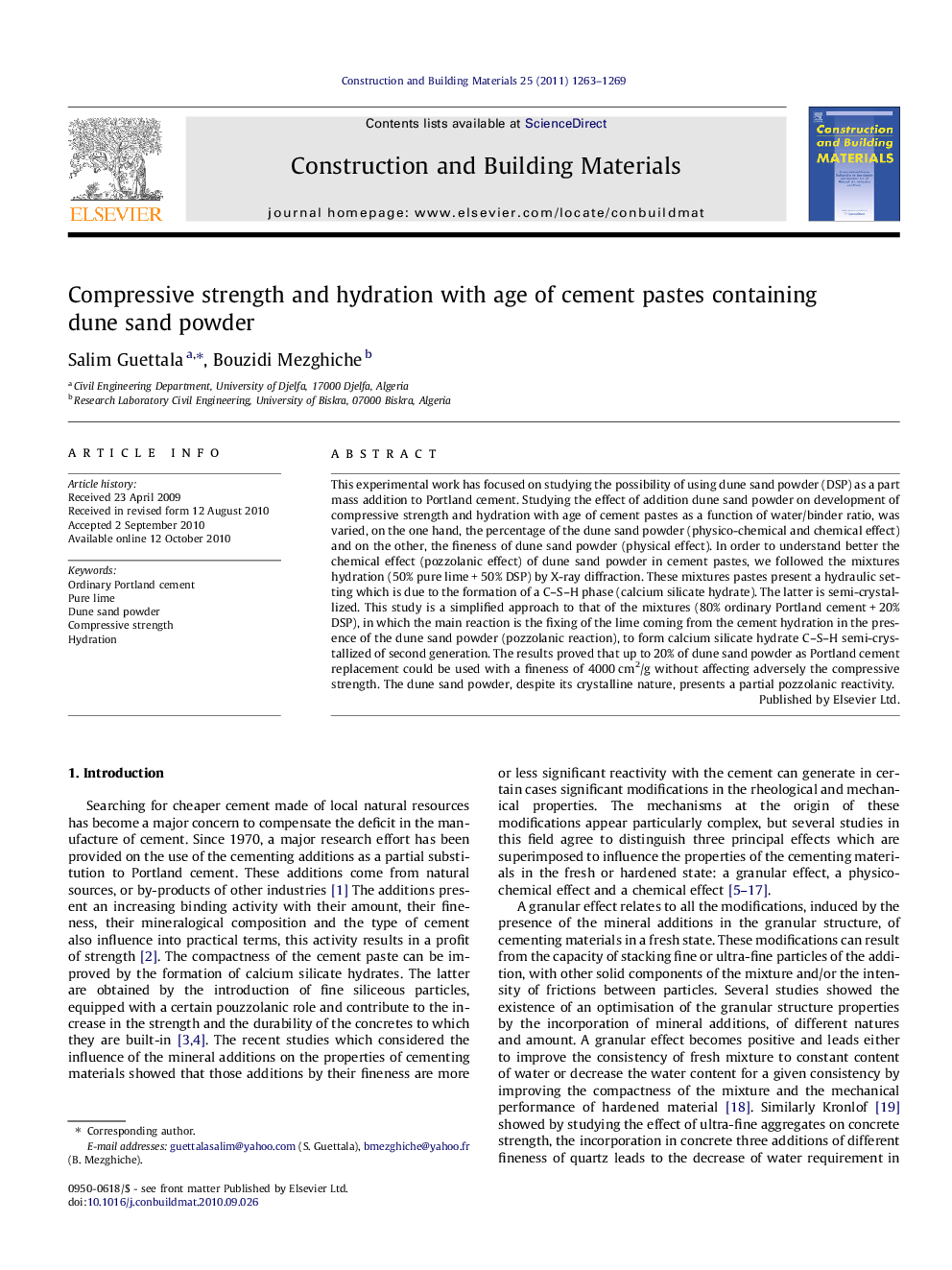| Article ID | Journal | Published Year | Pages | File Type |
|---|---|---|---|---|
| 260052 | Construction and Building Materials | 2011 | 7 Pages |
This experimental work has focused on studying the possibility of using dune sand powder (DSP) as a part mass addition to Portland cement. Studying the effect of addition dune sand powder on development of compressive strength and hydration with age of cement pastes as a function of water/binder ratio, was varied, on the one hand, the percentage of the dune sand powder (physico-chemical and chemical effect) and on the other, the fineness of dune sand powder (physical effect). In order to understand better the chemical effect (pozzolanic effect) of dune sand powder in cement pastes, we followed the mixtures hydration (50% pure lime + 50% DSP) by X-ray diffraction. These mixtures pastes present a hydraulic setting which is due to the formation of a C–S–H phase (calcium silicate hydrate). The latter is semi-crystallized. This study is a simplified approach to that of the mixtures (80% ordinary Portland cement + 20% DSP), in which the main reaction is the fixing of the lime coming from the cement hydration in the presence of the dune sand powder (pozzolanic reaction), to form calcium silicate hydrate C–S–H semi-crystallized of second generation. The results proved that up to 20% of dune sand powder as Portland cement replacement could be used with a fineness of 4000 cm2/g without affecting adversely the compressive strength. The dune sand powder, despite its crystalline nature, presents a partial pozzolanic reactivity.
Research highlights► Dune sand powder presents a partial pozzolanic reactivity. ► Presents a crystalline structure siliceous. ► Plays a role of lubricant. ► Up to 20% as cement replacement could be used without affecting the compressive strength.
